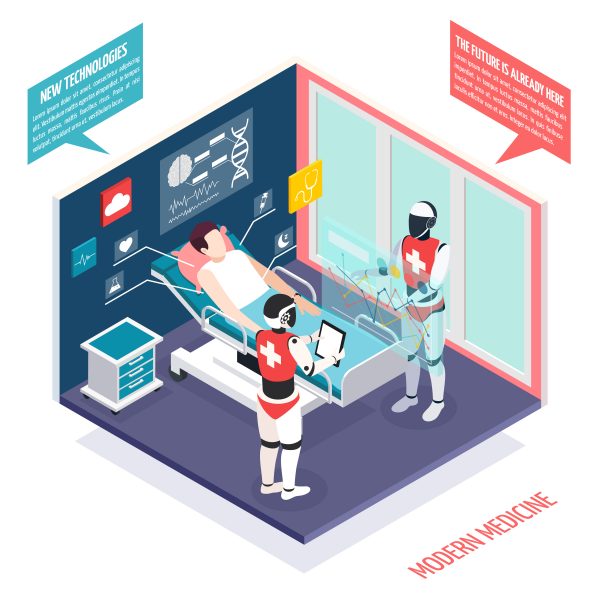Robotics in healthcare -
A brief Overview

We are in the midst of a fast-developing technology era; AI and Robotics. Robot technologies are not new to us and they have already transformed many industries and it’s expected that the global medical robotic market alone, is to exceed $16 billion by 2025.
Since the 1980’s when the first experimental surgical robots were introduced into hospitals, to the present day, that sees the potential applications for the healthcare sector continue to grow, we can see how they will not only improve what exists but even extend the services that are provided. Robots will help carry the burden of repetitive and monotonous tasks so that, staff can deal with the more important issues and carry out the tasks that require human decision-making skills.
What are some of the Challenges?
As exciting as the prospect of Robots becoming more visible and playing a bigger role in healthcare, it’s important to consider and understand the challenges they can create. The introduction of new technology into a long-established workplace with traditional work practices and processes can lead to them being viewed as unwelcome and disruptive innovations. The upheaval of work practices can bring about negative attitudes especially when there could be new ethical and legal implications. Other reasons may include; perceived threats to professional roles, lack of exposure to advanced technological systems, absence of clear liability rules regarding robotics. Taking the time to explore such considerations will allow for the development of an informed robotics strategy for the healthcare sector.
The initial cost of robot technology is a barrier to some hospitals and healthcare settings, which will delay the wider implementation of these technologies. As well as the time and cost of training staff. The role of academic institutions and technology startups is crucial in this space to provide further innovations that will bring the industry closer to overcoming such challenges.
In contrast, robots that have been developed and designated for specific uses, such as surgery, or confined to behind the scene roles, such as pharmacy robots, are more readily accepted due to there being fewer perceived implications. This is where the biggest developments are likely to be seen and accelerated for the reason for the higher level of acceptance. Robots in surgery, with advancing Artificial Intelligence (A.I.), will enhance patient care and improve surgical outcomes for patients with less invasive approaches and intelligent systems. Already robots in surgery have achieved lower costs for hospitals by reducing operating time, increasing the efficiency of operating theatres, and eliminating human error.
Some Applications of robotics in healthcare
One application of robotics in healthcare that is currently expanding, with less of the difficulties in implementation into settings, and propelled even more so with the current COVID-19 pandemic, is their use for disinfection. One way robots are being used to disinfect patient rooms is by using UV light. Such technology are highly effective at killing viruses and bacteria without the use of chemicals, a process known as Ultraviolet Germicidal Irradiation (UVGI). With increased focus and demand for such uses of robot technology, no doubt we will witness accelerated development of new and more advanced robots with disinfection applications.
The use of robots for patient care is likely to receive the most resistance to implementation due to the complexity of the ethical issues involved. However, due to the increasing aging population and the insufficient level of caregivers, robots are likely to play an increasingly crucial role in the routine care and rehabilitation of the elderly.
The further development of the robotic and A.I. technology will reveal further what roles they will play in the healthcare sector, as the roles of healthcare professionals will adapt to embrace their presence.
- OTHER LINKS
- Events
- Blog
- Partners
